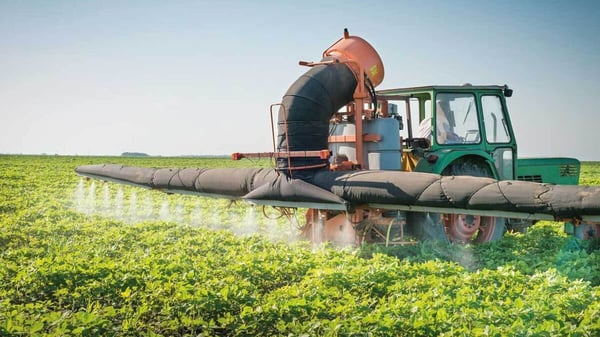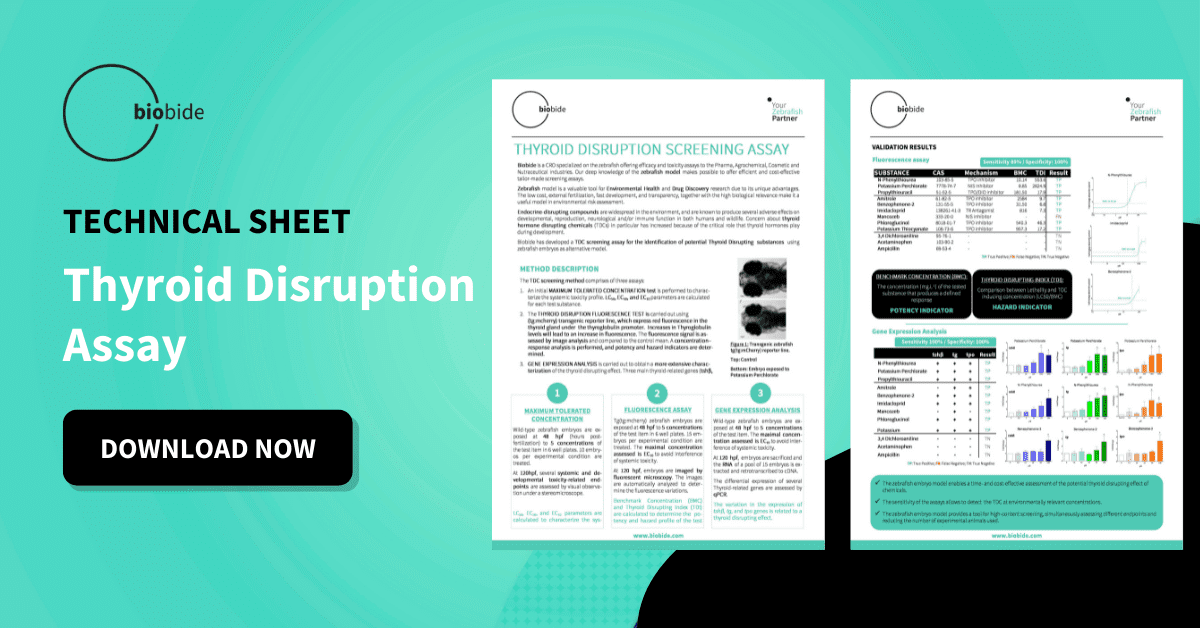Pesticides are an essential resource in ensuring sustainable farming and food production around the world. Even organic farming makes use of pesticides, albeit from natural sources, to reduce losses and increase crop yield. The aim here is not only to prevent plants from being eaten or damaged by pests and weeds but to prevent crops from being contaminated with substances that may be harmful to consumers. Simplifying, pesticides enable farmers to grow safe, healthy, and affordable food.

With the increase in the popularity of organic production, and enhanced food labeling requirements, this vital tool is often wrongly vilified. Exposure to certain chemicals used in pesticides has been shown to cause or aggravate conditions such as respiratory tract irritation, eye and skin irritation, nausea, vomiting, diarrhea, headache, and in more extreme cases (particularly with chronic exposure) Parkinson’s disease, asthma, depression, ADHD, infertility, or even cancer. In addition, it is not only relevant to the toxicity these chemicals may present to humans but also tremendously relevant to their environmental contamination capacity. Pesticides are able to affect extensively to water and grounds extensively through aquifer contamination.
Therefore the use of pesticides, particularly on crops intended for human consumption, must be subject to extensive toxicity testing and regulations, even after product approval. For a farmer seeking effective pest control methods that increase productivity and keep costs to a minimum, regulatory requirements of this nature can impose several obstacles to the undeniable need for profitability and render the industry unsustainable. For this reason, it is essential that pesticide bans are consistently scrutinized through the development of new and innovative hazard assays and risk assessment methods. Before we look more closely at how innovative toxicity testing models can help support both regulatory efforts and the farmers who must fulfill the regulations in question, we will first consider recent pesticide bans and their impact.
Regulations governing the use of pesticides
From June 14th 2011, the marketing of plant protection products in the European Union (EU) has been subject to Regulation (EC) No 1107/2009. This Regulation prohibits the use of any active substances in plant protection products unless they have been approved for that purpose in accordance with the regulation. Information can be found in the list of active substances approved in Great Britain1. Many substances initially approved have been subsequently withdrawn later, following later reviews or during the renewal process.
One of the more controversial pesticides to receive media coverage was chlorpyrifos, a highly toxic organophosphate pesticide used since 1965 on crops such as corn, soybeans, wheat, and a variety of fruits and vegetables. Having been linked to various diseases, including brain damage in children, the pesticide was banned in the EU in December 2019, with the United States of America (USA) USA following suit in 2022, some 57 years after it was first approved for being used on crops.
In spite of being more proactive than some other countries with regard to removing harmful substances from the agrochemicals market, the UK by no means boasts a flawless ethical record. A review by Unearthed, Greenpeace’s investigative journalism publication lists the UK as the worst offender with regard to the export of banned fertilisers to poorer and less-developed countries. Furthermore, since Brexit, a number of pesticides banned in the EU have been reapproved for its use in the UK in an effort to boost agricultural profitability. In January 2023, the UK Government announced that it was set to ignore the advice of the EU and its own Expert Committee on Pesticides and the Health and Safety Executive, by granting emergency authorisation for the use of a neonicotinoid product as a seed treatment on sugar beet. This pesticide has been shown to cause harm to honeybees and other pollinators, which would likely outweigh the benefits.
That being said, the EU and the UK officially have the strictest requirements in terms of banned substances: as of 2019, the countries with the most known bans were the EU and the UK (60 banned plus 229 specifically ‘not approved’ pesticides which are Highly Hazardous Pesticides (HHPs) and/or banned by another country). In second place came Brazil (81), followed by Saudi Arabia (72), Cambodia (58), India (51), and China (47).
Potential solutions to the problem
Several studies have pointed out pesticides' relevance on crop yields that would be reduced by 50-90 percent. In the early 90s, it was also pointed out that without a proper substitution of banned pesticides the production levels would drop and the prices would substantially increase.
Substitutes can only be identified and confirmed safe by means of vital pre-clinical testing, and this is where companies such as Biobide can support regulatory and safety efforts through innovative toxicity testing. One particularly noteworthy innovation is the use of zebrafish in pre-clinical assays. Zebrafish lend themselves particularly well to toxicity testing with a view to the approval of pesticides on crops for human consumption on account of the fish’s genetic similarities to humans. What’s more, the fish reproduce in vast quantities, are simple to maintain and are transparent during the larval phase (thus enabling simple internal observation). This permits the development of High-Content Screening (HCS) assays that are cost and time-effective. Moreover, one of the most relevant benefits zebrafish offers is the possibility of using embryos of less than 5-6 days post-fertilization. In this stage, the zebrafish larvae are not considered animals and, therefore, are not under animal care regulations and it is considered as a New Alternative Model (NAM) aligned with the 3Rs principle (Replacement, Reduction, and Refinement of animals). A variety of innovative test methods, including several transgenic fluorescent zebrafish models, which can be used to study developmental neurotoxicity (DNT) or even acute neurotoxic effects are very promising with a view to predicting the physical effects of pesticides on human beings. Also, the zebrafish model is relevant to assess the environmental toxicity of pesticides in freshwater aquatic environments. In this sense, Biobide offers services in environmental toxicity assessment using not only zebrafish but also well-established aquatic models such as algae and daphnia.
In summary
The potentially harmful health-related and environmental effects of pesticides mean that strict regulations and ongoing evaluations regarding pesticide safety are required. However, this brings with it significant economic implications for crop producers working within an industry that already finds itself under financial scrutiny and pressure. Effective pest control measures are essential, and to ensure this requires the development and approval of new pesticides to replace those banned from the market. Innovative toxicity testing can make a vital contribution to increasing the efficiency and time reduction of deciding which are the safest and most effective pesticides in preclinical studies. In this sense, the use of zebrafish embryos offers the ethical benefits of using a NAM in High Content Screening (HCS) assays, enabling great time and cost-effectivity.
Sources
- Importance and benefits of pesticides - (Pesticidefacts.org) (https://pesticidefacts.org/topics/necessity-of-pesticides/#:~:text=Without%20crop%20protection%2C%20including%20pesticides,to%20insects%2C%20diseases%20and%20weeds.&text=Pesticides%20are%20important.,as%20raising%20productivity%20per%20hectare.)
- Prohibited and Non-Approved Active Substances, (https://www.hse.gov.uk/pesticides/pesticides-registration/withdrawal-and-restrictions/banned-and-non-authorised-pesticides.htm)
- Chlorpyrifos Pesticide Use, (https://eelp.law.harvard.edu/2017/10/chlorpyrifos-pesticide-use/)
- Pesticide Chlorpyrifos banned by EU (2019), Biomolecules Journal, (https://www.ncbi.nlm.nih.gov/pmc/articles/PMC7564125/)
- Crispin Dowler, Thousands of tonnes of banned pesticides shipped to poorer countries from British and European factories (2020), Unearthed (https://unearthed.greenpeace.org/2020/09/10/banned-pesticides-eu-export-poor-countries/)
- UK set to allow banned pesticide to be used again as EU tightens restrictions (2023), Bumblebee Conservation Trust, (https://www.bumblebeeconservation.org/uk-set-to-allow-banned-pesticide-to-be-used-again-as-eu-tightens-restrictions/)
- Banned Pesticides, Pesticide Action Network, (https://www.pesticideinfo.org/resources/banned-pesticides#:~:text=An%20overview%20of%20bans&text=The%20countries%20with%20the%20most,%2C%20and%20China%20(47))
- Gianessi, Leonard P. and Nathan Reigner (2005), The Value of Fungicides In U.S. Crop Production, (https://croplifefoundation.files.wordpress.com/2012/07/completed-fungicide-report.pdf)
- D. Zilberman, A. Schmitz, G. Casterline, E. Lichtenberg, J.B. Siebert, The economics of pesticide use and regulation (1991), Science, (https://pubmed.ncbi.nlm.nih.gov/17745183/)





